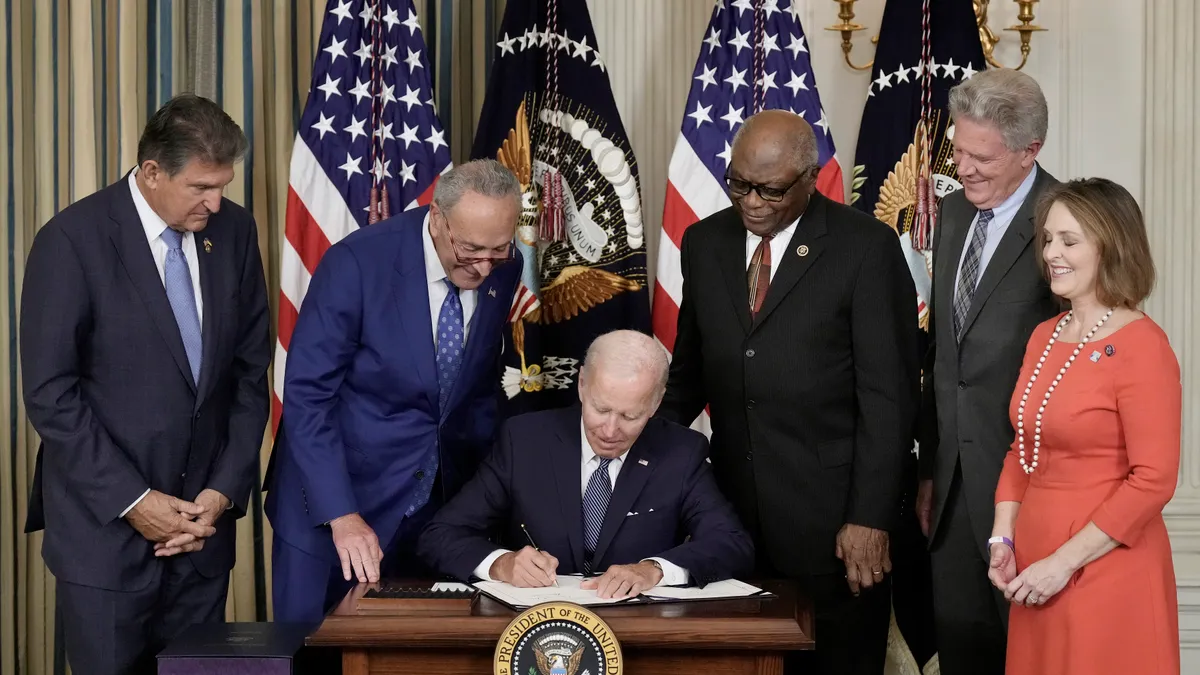Many city leaders and other supporters heralded the Inflation Reduction Act when it was on its way to being signed by President Joe Biden on Tuesday. Among its sweeping climate benefits, the legislation will provide billions of dollars worth of tax credits, grants and program funding to bolster urban parks and forests, improve home energy efficiency and mitigate pollution in overburdened communities.
To capitalize on the new funding opportunities, local governments, climate experts and the private sector need to overcome coordination challenges, and city leaders “need to be ready to act,” said Susan Asam, vice president of climate and planning and a senior fellow at ICF.
“We're going to need cities and communities to really be stepping up their actions,” said Asam. “I think that cities are in a lot of different stages in terms of their readiness to act.”
The Inflation Reduction Act’s passage comes as cities work to access competitive grant funding made available through the $1.2 trillion bipartisan infrastructure law that passed last year. Strategies and resources adopted for that purpose — like setting up working groups to pool staff resources and perspectives, or accessing external technical assistance — could also prove useful in pursuing the climate funding opportunities.
Cities can start by looking at any existing climate plans, said Lacey Shaver, senior manager for city clean energy with the World Resources Institute’s U.S. Energy Program. Cities should ask, “What is lacking funding? What areas have you not been able to fund yet? And then start to align those plans with federal funding opportunities,” Shaver said.
For municipalities that haven’t done that planning, there are still opportunities to do so. The Department of Energy’s Energy Efficiency and Conservation Block Grant Program, included in the infrastructure law, allows some funding for developing an energy and climate plan, for example, Shaver said.
Much of the potential impact the new law will have on cities won’t come from city government. Cities can only affect a portion of communitywide greenhouse gas emissions through local regulations and investments, thus city leaders must communicate with private-sector players about incentives for energy-efficient building upgrades, for example, that will be coming online.
“They really need action from the residential, commercial and industrial sectors,” said Shaver. “So all the programs that are targeted towards those sectors are going to help cities’ GHG emissions goals.”
Both the infrastructure law and the legislation signed this week hold potential for cities to distribute benefits across communities. Shaver — who recently analyzed where U.S. cities stand with implementing the Biden administration’s Justice40 Initiative and how IIJA funding will play a role — believes that cities that have equity plans in place, or that effectively identify areas in greatest need of investment, can advance equity goals if they take advantage of these federal funding opportunities.
“Many of the cities I've worked with have really strong equity goals but haven't been sure exactly how to fund these projects and enable progress,” Shaver said. The combination of environmental justice-related funding in the IIJA and IRA “is going to really just be huge from that equity perspective,” she said.
Asam is also optimistic about the potential impacts from the Inflation Reduction Act in disadvantaged or environmental justice communities but said it remains to be seen how funding opportunities will play out. While the new law covers a lot, “The design of these federal programs will be pretty critical in ensuring that there's access to the funding by some of the communities that have historically been overlooked or missed out on past funding opportunities,” Asam said.











